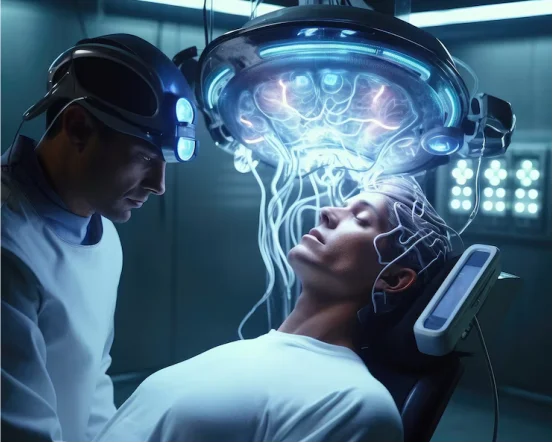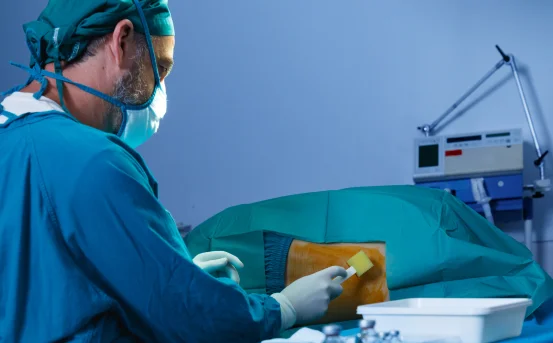Neuroendoscopy is a cutting-edge, minimally-invasive surgical procedure used to detect and treat diseases of the spine, brain and the central nervous system. Contrary to traditional open-brain surgeries that require large incisions as well as lengthy recovery times, the neuroendoscopy technique allows neurosurgeons to perform surgery through tiny holes with an endoscope, a small flexible tube that is equipped with a camera as well as surgical instruments. There are various types of neuroendoscopy surgery available that cater to specific neurological conditions.
This groundbreaking technique has changed the way that certain neurological conditions are treated, resulting in more precision, fewer complications, and faster recovery.
Why Neuroendoscopy Surgery is Performed
Neuroendoscopic surgery is generally performed for:
- Get rid of brain tumors (especially ones that are located in the deep-seated areas or ventricular regions)
- The treatment for hydrocephalus (a condition that causes an excess of cerebrospinal fluid inside the brain)
- Reduce intracranial pressure
- Arachnoid lesions, cysts or colloid cysts
- Conduct biopsies in areas that are difficult to reach of the brain.
- Explore ventricular systems without disruption to maintain healthy brain tissue
The aim of neuroendoscopy is to reduce the risk of brain injury as well as reduce scarring and speed recovery, with the same (or better) results as conventional methods.
Types of Neuroendoscopy Surgery
There are various types of neuroendoscopy procedures. They are classified according to the area of the spine or brain they are aimed at. Each one has distinct indications and benefits.
1. Intraventricular Neuroendoscopy
Primarily used for treatment of colloid cysts, hydrocephalus and tumors of the ventricles of the brain.
Procedure Overview:
Intraventricular neuroendoscopy aims to gain access to the brain’s ventricular system which is home to cerebrospinal fluid (CSF). The most popular procedures is called Endoscopic Third Ventriculostomy (ETV) which is used to clear obstructions as well as restore CSF flow.
Common Conditions Treated:
- Obstructive hydrocephalus
- The Pineal Region Tumors
- Colloid cysts
- Arachnoid and septal cysts
- Key Benefits:
- Avoids shunt placement
- Low Recurrence Rate
- Long-term, high-quality success in a few instances
2. Endonasal (Transnasal) Neuroendoscopy
Primary Use Treating pituitary tumors craniopharyngiomas and skull base lesions
Procedure Overview:
Also referred to as endoscopic surgery, this procedure allows access to the brain via nasal passages. It removes the requirement to open the skull, which makes it the preferred option for midline tumors that are located at the base of the skull.
Common Conditions Treated:
- Adenomas of the pituitary
- Meningiomas in the sinuses of the sphenoid.
- Cleft cysts in Rathke’s face
- Skull base problems and CSF leaks
Key Benefits:
- No visible evidence of scarring
- Shorter hospital stay
- Minimal brain Retraction
3. Intraventricular Tumor Removal
Primary Utilization: Resection or biopsy of tumors in or near the ventricles of the brain.
Procedure Overview:
If tumors grow within the deep-seated brain regions within the skull, Neuroendoscopy may be used to see and eliminate them with specialized endoscopic instruments.
Common Tumors Treated:
- Ependymomas
- Subependymomas
- Central neurocytomas
- Choroid plexus tumors
Key Benefits:
- Access without a large craniotomy
- Improvement in the visualisation of the deep brain regions
- It can be used in conjunction with stereotactic navigation to increase accuracy
4. Spinal Neuroendoscopy
Primary Use: Treatment and diagnosis of tumors, spinal cysts or disc herniation.
Procedure Overview:
While it is more frequently used for the head, it may be used in spinal procedures. Utilizing a lateral or posterior technique, spinal endoscopy can help treat lesions without causing any damage of the spine as well as surrounding structures.
Common Conditions Treated:
- Arachnoid cysts in the spine
- Tumors in the Intradural region
- The condition of spinal stenosis (in some cases)
- Key Benefits:
- The spinal canal is minimally manipulated
- Rehabilitation speedier
- Postoperative pain relief
5. Ventricular Cyst Fenestration
Principal Use: Opening and draining brain cysts that create blockages or pressure
Procedure Overview:
Brain cysts, like arachnoid cysts, or colloid cysts can stop the normal flow CSF. Neuroendoscopy enables surgeons to open (open) the cysts and help restore CSF circulation.
Common Conditions Treated:
- Arachnoid cysts
- Colloid cysts
- Cystic tumors
Key Benefits:
- Prevents the development of hydrocephalus.
- Relieves symptoms such as headaches or vision problems
- Secure access to the delicate brain regions of the brain
- Advantages of Neuroendoscopy Over Traditional Brain Surgery
- Minimally Invasive: Tiny incisions result in less blood loss and quicker healing.
- The majority of patients are discharged in several days.
- Lower Risk of Infection A small amount of exposure can reduce the risk of infection.
- Better Cosmetic Results There are no large cuts or flaps of bone.
Improved Vision HD cameras offer a high-quality, real-time images of the brain’s structure.
Recovery and Outcomes
- After neuroendoscopy, most patients experience:
- Hospitalizations that are shorter (typically 3 to 5 days)
- Postoperative pain less
- Rapid return to normal routine
- High rates of success, particularly for small tumors and hydrocephalus.
The length of recovery time is contingent on the type of procedure and the health of the patient. Aftercare MRI and CT scans are often used to verify the successful completion of the surgery.
Conclusion
Neuroendoscopy is an important technological advancement in neurosurgery. From treating hydrocephalus to eliminating complicated neurotumors in the brain, this minimally-invasive procedure is a reliable alternative that is more secure than conventional surgeries using craniotomy.
Through understanding the different kinds of neuroendoscopy procedures caregivers and patients can make educated decisions and consult with experienced neurosurgeons for the best treatment choices. If it’s removal of an endonasal tumor and ventricular cysts fenestration neuroendoscopy is opening the door for a less-invasive as well as more accurate future for neurosurgical treatment.























